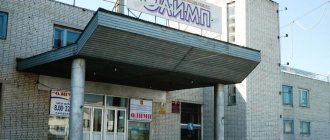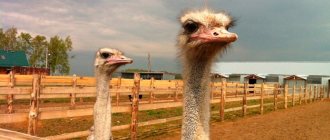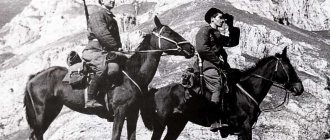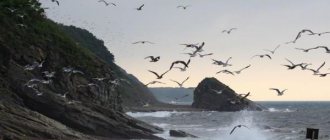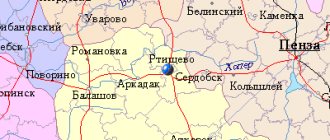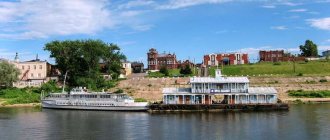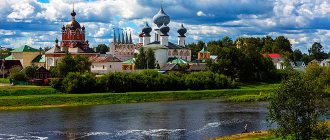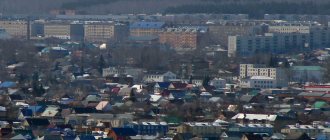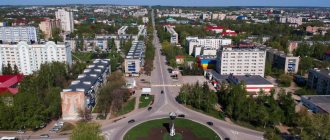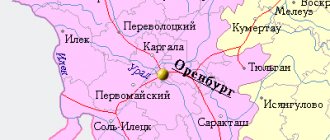Belaya Kalitva was founded in 1703, and the first mentions of it are associated with the times of “The Tale of Igor’s Campaign,” when the Russian army was killed in the battle with the Polovtsians. Archaeological excavations say that people lived here in the 2nd millennium BC. The city itself is quite green and clean, and makes a pleasant impression. The only thing was that it was difficult to navigate the road, since the city has an irregular shape and is divided by rivers; we got lost several times and went to the wrong place. Belaya Kalitva is located in the center of the Rostov region and is the cradle of the Don Cossacks.
The route of our trip and its concept can be seen here: We are participating in the project “Russia in 365 days”
The surroundings of Belaya Kalitva are very picturesque: hills, rocky Avila Mountains, and the wide Seversky Donets River flows through it. We rarely visit the steppe, but we got the impression that the Belokalitvensky region has a landscape uncharacteristic for the steppes. Despite our love for dense forests, we often couldn't take our eyes off one or another spectacular view.
Belaya Kalitva Rostov region
You can see Belaya Kalitva in one day, and its surroundings in a couple more. For the first time this will be enough. First, it is best to go to the Museum of Local Lore and get acquainted with the main historical moments, then take a walk through the city park located not far from the museum, then climb Karaul Mountain and look at the whole city from above.
On Maidan Square
Novovvedensky Cathedral
Father has been with us for 20 years
The book The Lay of Igor's Campaign in the museum
Belaya Kalitva Museum of History and Local Lore
Belaya Kalitva Museum of History and Local Lore
Belaya Kalitva Museum of History and Local Lore
Belaya Kalitva Museum of History and Local Lore
Inscriptions in the city park
Old cart in a city park
Coat of arms of the city of Belaya Kalitva
A new tradition for newlyweds to hang locks
Monument in the city park
One of the problems of the city is the lack of toilets
Negative aspects of my city
To be honest, there are very few places here where people can go and really relax, regardless of their age. The only close place can be considered the square, which is located near the Palace of Culture named after. Chkalova.
Where to relax
In almost every yard you can see such a swing.
A more distant attraction is the Prospekt cinema, in the village of Zarechny, but just so you understand, the distance from the city to the cinema is about twenty kilometers. In “Prospect” there is a cafe “Baggies”, which has an entertainment area for children under 10 years old, but the services there are quite expensive.
Despite the considerable distance, people go there on weekends with their families to relax, eat, or just watch their favorite movie or cartoon.
Metallurgical plant
It is impossible not to mention the Alprof Metallurgical Plant. Although it specializes mainly in aluminum and aluminum parts, zinc and lead are also used in metal alloys.
Every person with basic knowledge of chemistry understands that these elements are strong aggressors of cancerous tumors. After all, where do the vapors of these alloys emit? Of course, into the atmosphere whose air the city residents breathe.
Our roads and attitude to sports
I believe that throughout Russia the problem of roads remains relevant, but it is better not to talk about the roads of Belaya Kalitva at all. You won’t be able to drive even ten meters before there is either a bump or a bump.
Karaul Mountain
Karaul Mountain is closely connected with the Tale of Igor's Campaign. In 1970, a monument to brave Russians was erected. Previously, a reconstruction of the battle and Kayal readings took place here (then they were moved).
View from Karaul Mountain to the city of Belaya Kalitva
View from Karaul Mountain to the city of Belaya Kalitva
Behind the houses is the goal of the Avila Mountains
Recommendations
Notes
- ^ a b c d f g gram hour
Law No. 340-ZS - ^ a b Encyclopedia of Russian Cities
. Moscow: Great Russian Encyclopedia. 2003. p. 39. ISBN 5-7107-7399-9. - ^ a b
Federal State Statistics Service of Russia (2011).
“All-Russian Population Census 2010. Volume 1" [All-Russian Population Census 2010, vol. 1]. All-Russian Population Census 2010 [All-Russian Population Census 2010]
(in Russian). Federal State Statistics Service. - "26. The size of the permanent population of the Russian Federation by municipalities as of January 1, 2022.” Federal State Statistics Service. Retrieved January 23, 2022.
- ^ a b c d f
Law No. 218-ZS - "On the calculation of time." Official Internet portal of legal information
(in Russian). June 3, 2011. Retrieved January 19, 2022. - Post office. Information and computing center of OASU RPO. ( Post office
).
Search for postal facilities ( Search for postal facilities
) (in Russian) - Federal State Statistics Service of Russia (May 21, 2004). “The population of Russia, the constituent entities of the Russian Federation as part of federal districts, urban settlements, urban settlements, settlements, settlements is 3 thousand or more people” [Population of Russia, its federal districts, constituent entities of the federation, districts, urban settlements, rural settlements - administrative centers, rural settlements with a population of more than 3000 people] (XLS). All-Russian Population Census of 2002 [All-Russian Population Census of 2002]
(in Russian). - “All-Union Population Census of 1989. The actual population of union and autonomous republics, autonomous regions and districts, territories, regions, urban settlements and villages. On the administrative-territorial structure of the Rostov region.” Came into force on the date of official publication. Published: “Our Time”, No. 187–190, July 28, 2005 (Legislative Assembly of the Rostov Region. Law No. 340-ZS of July 28, 2005 On the administrative-territorial structure of the Rostov Region
As amended by the Law of November 27, 2014 No. 270 -ZS.
On amendments to the regional law "On the administrative-territorial structure of the Rostov region"
. Valid from the date of official publication.). - Legislative Assembly of the Rostov region. Law No. 218-ZS of December 14, 2004 “On establishing boundaries and granting the status of an official municipal entity” to the Belokalitvinsky district “and municipal entities within it,” as amended. Law No. 607-ZS of May 10, 2011 “On amendments to regional laws” On establishing boundaries and granting official status to the municipal formation “Belokalitvinsky district” and the municipalities within it “and On establishing boundaries and granting the corresponding status to the municipal formation” Kamensky district “and the municipalities within it” Published: “Our Time”, Nos. 325–338, December 28, 2004. Came into force from the date of official publication. (Legislative Assembly of the Rostov Region. Law No. 218-ZS of December 14, 2004 On establishing boundaries and giving the appropriate status to the municipal formation “Belocalitvinsky District” and its constituent municipalities
As amended by Law No. 607-ZS of May 10, 2011.
About amendments to the regional laws “On establishing boundaries and giving the appropriate status to the municipal formation “Belokalitvinsky District” and its constituent municipalities” and “On establishing boundaries and assigning the appropriate status to the municipal formation “Kamensky” District “And its municipal formations”
Valid from the date of official publication.).
People of Belaya Kalitva
First of all, Belaya Kalitva will be of interest to history buffs; this is its main attraction. What happened here: genocide against the Cossacks, numerous territorial transformations, occupation and prisoner of war camps, battles for liberation. At the same time, judging by historical information, there is a large percentage of people here who have done something outstanding: 19 heroes of the USSR during the Great Patriotic War, 3 holders of the Order of Glory, 29 laureates of State Prizes, 7 world champions, dozens of champions of Russia and Europe. But this is just a town of miners and metallurgists. There is probably something special about these lands...
I wrote about some people living now, who do not complain about their bad life and are gradually changing the world in this article - Belaya Kalitva and people who love their city.
Belokalitvinsk history during the Civil War
in our local history museum 90 years later, already in our time, completely strangers found Laskov’s remains in his former farmstead. Kashcheev's grandfather Kuzma Fedorovich (in Boguraev they were called Gokaly), he was more than 90 years old, was killed by the Red Army.
Everyone left x. Bogurayev, but he stayed. “I’m not going anywhere,” he said. And he didn’t leave. He climbed into the cellar and sat there, praying to God. And they, the Reds, pulled him out of the cellar by his beard. Looking ahead, he crossed himself and folded his hands on his chest - he prepared for death. It was in this situation that my grandfather was shot. The impact of the rifle shot was such that he flew into the cellar. Eyewitnesses said: the veins on his hands were torn out by bullets.
And the Red soldiers hanged Zarubai, who was on the Circle in the village of Ekaterinovskaya, on the gate of his own yard, opposite the kuren. The kuren was nice, spacious, with downstairs. There was a shop downstairs. They traded. They took what the Reds needed from the shop and set the smokehouse on fire. The barns, barn, and house burned down. The gate with the hanged Zarubai also burned down. When the refugees, residents of Bogurayev, returned to the farm a few days later, they saw the burnt body of Zarubai with a rope at the burnt gate. The rope burned out, he fell to the ground, and hungry dogs pulled away his bones.
More than a dozen houses were burned by the Reds on this day. Bogurayev and executed 6 old Cossacks. This is what the old-timers of Bogurayev remember about the first Red Army soldiers. I described the testimonies of the Cossacks of the Bogurayev farm: Kuzma Fedorovich Kashcheev, Melania Stefanovna Kashcheeva, Ivan Aleksandrovich Kalinin, Ivan Andreevich Kamentsev, Andrei Mikheevich Kamentsev and many others..
We have an old house in our village. He is a witness, but he is silent, but he could tell a lot.
Cossack Karpov (Lisavichev) did not have time to leave for Grebenskaya Balka, he hesitated, saving the shrines. The Reds entered the Bogurayev farm. Where should a Cossack go? He ran into the yard to the Ukrainian Serik.
- Fyodor Vasilyevich, I’m lost, I’m lost! The Reds are coming, they don’t take anything into account: they shoot, it’s terrible!
A warrior of the Ryazan infantry regiment hid him in his cellar and did not give him away. Lisavich sat in the cellar until nightfall. And in the dark he went along the ravine to the Grebyanye Mountains.
Resident x. Bogurayev Chugunova Ksenia Mikhailovna old house. Delivered in 1910. Once I asked her:
- Aunt Ksenya, your house is old. How did he survive in 1918 and not be burned then on Palm Sunday?
- Yes, the Reds didn’t burn it for nothing. They lit the barn and it was already burning. And the smoking room - the corner of the house - was poured with kerosene and lit. So your grandfathers, crests, our neighbors Serik Fedor Vasilyevich and his wife Shapovalova - Serik Vasilisa Fedorovna, came running, knelt down and asked for the Red Army soldiers. There were no owners, they were in retreat. People heard and saw. Still, someone remained in the farm and observed this picture.
- Guys, you're pathetic... Don't burn the house down. She's a widow. Lives alone, without a husband. Why, we are neighbors, Christians. You leave, and we will stay here. What will the Cossacks tell us? How will we look you in the eye?
The Reds left the yard. Serik F.V. with his sons Ivan and Andrey began to put out the fire in the barn. So the kuren still stands... Maybe this helped the Ukrainian Serikovs to escape when the Cossacks returned to x. Bogurayev.
Help for the Cossacks came from the people of Catherine the Great. What happened here! The fire victims, the victims, and the relatives of the killed are crying and screaming. Cossacks are galloping through the streets. Some, armed with whatever they could find, followed the Red armored train along the railway to the Bogurayev junction. The Cossacks gathered the Circle first in a farmstead near the school (the courtyard of Serik F.V. is also there. And they came to the Circle, like everyone else. Trouble, common grief). The Cossacks shout: “Beat the crests! Nonresidents are at one with the Reds! Trump led and pointed out those yards where there were officers. These houses were burned." - “You can’t beat him!” They are Christians. Send us outside the Don region!” - “Beat and that’s it!” But send them out, they will form there and come here armed again!”
The Cossacks of the First Don District who came to help were especially furious. Then three old Cossack men from Bogurayev came out and took the floor. Karpov (Lisavichev) spoke.
- Gentlemen Cossacks! When you shoot this old man and his sons, then beat him and me at the same time.
- What are you talking about, old man!
The two grandfathers also nodded their heads in agreement, supporting Karpov.
- Yes, because he, this Little Russian, saved me. I am a church watchman, and he helped me preserve the church’s shrines.
For two days, the Serikovs, cleanly dressed, sat under the wall, waiting for the Circle’s decision - execution. But they were not shot. Twice they took me out to the hill, but the Cossacks, the people, did not allow me to be shot, they defended me. The Cossacks followed the Reds, and the Seriks harnessed themselves to the carriages and then picked up the wounded Cossacks along the railway.
All these events happened before Easter in 1918. Local residents did not know what was happening. They see that there is war and that’s all. Early in the morning, as the Reds left to the west, on Ivashkina Mountain, opposite x. Bogurayeva - mounted Cossacks - about fifty. Catherine's people.
- Everyone go out and dismantle the railway, otherwise...
The Cossacks on foot and on carts reached the railway. Some on horses, some on bulls.
Out-of-town quarries began to manually cut down stone entrances and tear them with gunpowder. Cossack residents were dismantling the railway. From the railway bridge to the barracks is 45 kilometers. From the 45th kilometer to Boyarkina Balka (to the barracks at the crossing over the railway) the Bogurayevites had to dismantle it. Next, the residents of x. Olkhovsky, Mechetnyans, Chekunovtsy, Osinovtsy, etc. Things were going wrong. They unstitched the sleepers. They put them in stacks. They hooked the rails and pulled them with bulls. The rails were easily bent by the knee. The rails were loosened, placed on sleepers, and the sleepers were set on fire. The rails twisted and twisted on the fire. The holes were filled in. They took the crutches into horseshoes. Some were taken on ploughshares. They didn’t blow up the bridge, and there was nothing to do it with. On the Circle near the barracks at Bogurayev station, old officers said:
- Destroy the road. Let the Reds go to Moscow. But we can’t touch the bridge. The war is just beginning, and we won’t be able to fight without a bridge. We will restore the railway, but it will be difficult for us to restore the bridge. We cannot allow the Reds to pass through the Don territory.
Residents of the village thought that this was Romanovsky’s detachment going to Moscow - and all the Reds. Romanovsky's red detachment also acted blindly, not knowing the situation. Meanwhile, the Romanovites passed the Bogurayev station and stopped. From the camp they began to carry water in buckets to supply the locomotive.
Ataman H. Olkhovsky, in order to protect the young Cossacks, including his son, from harm, ordered the bulls to be driven to Kamyshovaya Balka and taken refuge there. The Cossacks had sticks and arapniks. These are all their weapons. The Red Romanovs executed and shot all the Olkhov Cossacks. The ataman wanted the best, but it turned out...
And the Reds, in order to tell their superiors about their exploits, brought their caps covered in blood to the train. Among those executed was the son of Ataman X. Olkhovsky.
Romanovsky’s detachments have advanced a little more, and the Red Army is moving towards them like a black cloud. Some of the troops are from Ukraine; Refugees are moving along the railway along with the army. Flow. Families of workers, peasants. It was a disaster, a nationwide grief. They wrote and wrote about him... But you can’t describe him. This organized disaster will be a shame for centuries and a curse.
There will be no Cossacks, but the shame and curse of those who destroyed the people will remain. 73 echelons of the Red Army moved from west to east, towards the Volga. And there were countless people moving. Everyone believed in the Bolshevik Party, its leaders and Soviet power. And they rolled towards Moscow, walking as if to the promised land. Under the protection of the Moscow government, under the wing of the mind to ask for order to be given to them. But the path to Moscow was closed. Ukrainian Haidamaks and Germans cut the railway. And this whole mass of armed people gathered at the Likhaya station and moved towards Tsaritsyn - the stronghold of Soviet power. And the railway was dismantled. The Cossacks dismantled it. They embittered the Red Army and the refugees even more.
In the trains, the Reds carried with them a lot of weapons and ammunition from military factories and warehouses. They had enough sleepers and rails with them. Such a mass of people was driven by fear; Cossacks gathered in the hundreds in the steppe. The checkers are sparkling. Here and there lava looms along the mounds. Everything works. They are laying sleepers, rails... The path is ready. All echelons are passed through - one by one. At the tail, the canvas is dismantled and the rails and sleepers are transferred to the head of the caravan. And so all the echelons move east. Refugees and military infantry detachments, under the cover of machine guns and guns on armored trains, are moving east along the railway line.
Romanovsky's detachment was at the head of the column. And again grief awaits the Cossacks. Cossack farms are burning along the railway. The Provalsky farmstead behind Belaya Kalitva is on fire. At the Grachi station they executed an old Cossack man from X. Pogorelova. Beyond Tatsinka, the Reds burned the Cossack farm of Dyakonov. There are only one or two kurens left in the farmstead. A ninety-year-old Old Believer was burned alive at the stake of railway shields. The remains were recognized by the once severed little finger. His last name was Kakichev.
On the farm of Romanov, a young Cossack was at home when the farm was set on fire. The guy hesitated and hid in the barn, and the barn was set on fire. He covered himself with a blanket and crawled to the bank of the Bystraya River. I sat in the water in the reeds until nightfall. Then he went to the village of Chertkovskaya, 30 kilometers to the north. His ears fell off. The face was disfigured. My hands were burned. The Cossacks took him around the villages and villages and showed him what the Reds were doing.
Executions in the Baklanovo farm, in Morozovskaya... From the Nikolaev farm alone, 40 people were driven to Morozovskaya and executed at the mill. The old people of the Kryukov farm were also executed……. Why do we call these farms? Yes, because they were mainly inhabited by people from our yurt.
The Cossacks also committed atrocities in the Khokhlatsky settlements, and we know this. And the Cossacks never approved of the actions of Roman Lazarev and his associates. By the way, he was shot by the whites in Crimea for his atrocities.
But the ill-wishers of the Cossacks are still persecuting us. Well, yes - God is the judge. It is inaccessible to the ringing of gold... There will be no Cossacks on earth, who, I wonder, will then be burned and slaughtered by those who are full of anger against the Cossacks?
And we, sinners, believe that this war was a translation of our people: Russians, crests, and Cossacks. And now, 90 years later, on the lands where there were once flourishing farmsteads and villages, foreign and foreign people have settled and live, and live well.
And for now they only tolerate Russians, Ukrainians, and Cossacks - the owners of the Don land. And although they call themselves Russians, they don’t even think of serving Russia. Everyone sees this, but remains silent.
As for the descendants of the participants in the Civil War, we will talk about our attitude to the events of 90 years ago in the words of M. Voloshin from the poem “Civil War”, written in 1919:
Both here and here, between the rows, the same voice sounds: “He who is not for us is against us! No one is indifferent: the truth is with us!” And I stand alone between them In the roaring flames and smoke And with all my strength I pray for both. I. Kolodkin, S. Smirnoff.
in our local history museum
02 Apr 2012, 16:01
- 0
Belokalitvinsk history during the Civil War
Cossack Cadet Corps
On the topic of people and the new generation... In Belaya Kalitva there is a prestigious Cossack cadet corps, where children not only from the Rostov region, but also from the Krasnodar Territory, Moscow and Siberia come to study. Unfortunately, the school was undergoing renovations, and we just walked around the empty rooms.
Cadets don't smoke
Patriotic inscription in the cadet corps
This poster is full of Cossack girls.
Igor tries himself as a cadet
Renovation of the Sports Palace
I would like to talk on a separate topic about the current Metallurg Sports Palace, built in 1980, back in Soviet times. It received this name due to the fact that it was built by the team of the Alprof Metallurgical Plant.
The palace functioned stably until 2015, but due to a long lack of repairs, the roof was damaged.
The repairs were estimated at 33 million 250 thousand rubles and they promised to renovate the building by 2022, but this did not happen. It’s already 2018, money from the regional budget is promised at every meeting, but funding cannot be achieved.
Where do the trainings take place?
Children, teenagers and adults exercise at the stadium in the warm season, but in winter everything becomes much worse. The sub-zero temperature does not allow exercising outside, and the Sports Palace is in disrepair.
So we have to negotiate with the directors of schools, technical schools, colleges about providing their gyms for training. Of course, this is very inconvenient for many children.
The approximate distance from the city to the 103rd school is 3-4 kilometers. Buses run on schedule - once every hour and a half, so, in most cases, you have to walk through all the alleys of our city.
Sports Palace "Metallurg".
In the photo you can see that the windows are wooden, which means that in winter it was cold in the room on the second floor. If the first floor warmed up at least somehow, then the second floor was very cool. Residents hope that this issue will be resolved soon.
